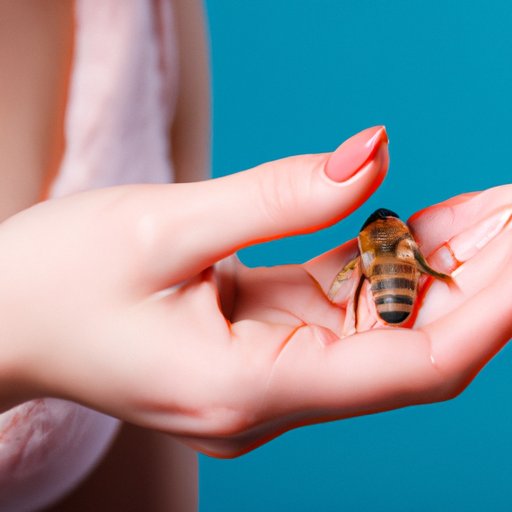
Introduction
Getting stung by a bee can be a painful and scary experience. However, knowing how to treat a bee sting properly can help alleviate discomfort and prevent any long-term damage. In this article, we will explore different methods for treating bee stings in a safe and effective way. We will discuss some natural remedies, when medical attention is required, prevention measures, and the science of bee stings.
A Beginner’s Guide to Treating Bee Stings
The first thing to do after getting stung by a bee is to remove the stinger if it’s still present. This can be done by scraping the area with a flat object like a credit card or fingernail. Avoid using tweezers as squeezing the stinger could inject more venom into your skin.
Next, wash the area with soap and water to lower the risk of infection. If the area is swollen or painful, applying something cold like an ice pack or a damp cloth could help relieve the symptoms.
It’s important to note that some common remedies for bee stings like vinegar or meat tenderizer are not strongly recommended. These remedies may cause the venom to spread or lead to infection and should only be used as a last resort.
Natural Remedies for Soothing a Bee Sting
There are many natural remedies that can help reduce the pain and inflammation caused by bee stings. These remedies can be created using common household items and may be a good alternative to over-the-counter treatments.
Honey, for example, is a natural antibacterial and anti-inflammatory agent that can be directly applied to the affected area. Essential oils such as lavender, tea tree, and eucalyptus oils can also be mixed with a carrier oil like coconut oil and applied topically to reduce inflammation.
Vinegar can also help in reducing swelling and pain. Dipping a cotton ball in apple cider vinegar and placing it over the sting for about 15 minutes can help to ease the pain.
When to Seek Medical Attention for Bee Stings
While most bee stings are relatively mild, some people may develop an allergic reaction. This can be potentially life-threatening and requires immediate medical attention.
Symptoms of an allergic reaction include difficulty breathing, swelling of the face or throat, dizziness, and a rapid heartbeat. Those who experience any of these symptoms should seek medical attention right away.
Other symptoms that could require medical attention include a fever, swelling or redness that persists for more than 48 hours, or signs of infection like pus or discharge around the sting area.
What to Know About Preventing Bee Stings
Prevention is key when it comes to bee stings. There are many ways to reduce your risk of being stung, such as wearing protective clothing like long sleeves/shirts, long pants, socks and closed-toe shoes when venturing outdoors. Avoid wearing bright-colored clothing or floral prints, as bees are attracted to these colors. You should also be cautious when eating or drinking outdoors, as sugary drinks or desserts can attract bees.
If you encounter a bee, try to remain calm and still. Swatting or running away can aggravate the bee and increase the likelihood of it stinging. Similarly, if you find yourself in a situation where bees are present, try to exit the area as quickly and calmly as possible.
The Science of Bee Stings
When a bee stings, its stinger penetrates the skin, and the venom sac that is attached to the stinger is injected into the skin. The venom causes an immediate pain sensation and leads to inflammation, swelling, redness, and itching around the sting area. In general, bees only sting when they feel threatened, so avoiding disturbing a hive or swatting at bees can help prevent stings.
It’s worth noting that there are many types of bees and wasps that people may encounter. For example, honey bees, bumblebees, wasps, and hornets each have unique characteristics and behaviors that make them different from one another. Understanding the differences between these species can help individuals make informed decisions about how to avoid or handle bee encounters.
Conclusion
Getting stung by a bee can be a painful and unpleasant experience. However, by following the tips and guidelines outlined in this article, you can minimize the discomfort and prevent any long-term damage. Always remember to seek medical attention if you experience severe or life-threatening symptoms and take proactive measures like wearing protective clothing and avoiding brightly colored clothing to prevent bee stings.




